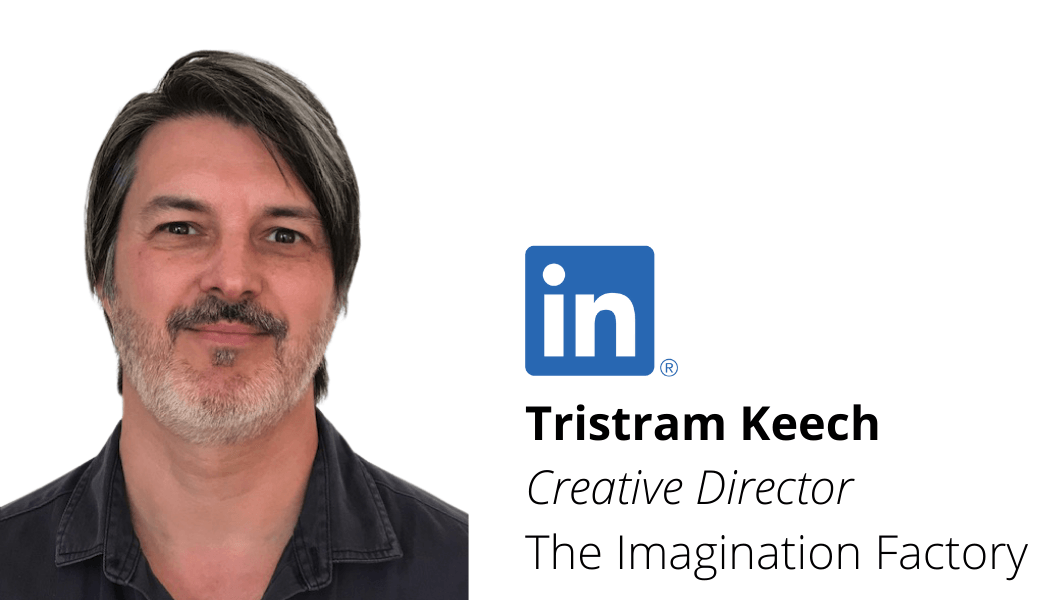As CES kicks off in Las Vegas (but mainly on a screen near you) it might be useful to have an Industrial Design perspective on discerning which new entrant products and brands are really delivering Good Design this time round because, as you know, a lot has changed in recent times…
Industrial Design, aka ‘ID’, is a subject area that a lot of today’s Product Designers have studied. Whether they pursue careers in ‘3D’ Physical or ‘2D’ Digital Product Design the lines between many contemporary Design disciplines are clearly blurred. There is plenty of space in the overlap but rather than worry too much about the ‘Future of ID’ (as some do) I’ll give you my take on why ‘ID’ can help create a better tomorrow.
WHAT DO YOU DO?
However we chose to name and describe what the ID team does at The Imagination Factory, it is certainly important that we help our clients do two key things:
• IDentify the right thing to design
• Give it an Identity
This is particularly important for new archetypes of product that have never existed before or are perhaps a hybrid ‘thing’ (maybe a ‘dumb’ product + some ‘smarts’). But there’s much more to it than that.
The ‘Ten Principles of Good Design’ (by none other than Dieter Rams) are great and have served us very well but ten is a lot to remember either as a rule of thumb or when describing what Design is to the uninitiated.
So, how about this one-liner:
Good Design is ‘Something New and of Value to Someone’
This short heuristic encompasses several important things concisely and is rather conveniently just one useful definition of Innovation. So, let’s break those words down into more detail:
O1_SOMETHING (NOT ANYTHING)
It once sufficed for brands to make things and sell them (c.1970’s.) Then, with the increased commodification of many consumer products, competing brands had to work harder by providing some level of service to their offering (c.1990’s). Later, brands had to listen to the voice of the customer and Design Thinking emerged as a human-centric methodology to make sense of people's ‘needs, wants and dreams’ (c.2010’s).
Today, it’s never been more important to anticipate and even predict what people will value next, especially as many of them now expect the following:
Immediate fulfilment of subscription-based on-going value in premium people- and planet-centred products, services and experiences, anytime and anywhere with memorable experiences and a ‘personalised moment’ (‘for my story’).
The only way to have even half a chance of doing any of this is by building trust through authentic engagement via a two-way relationship (easy, right?). The ‘something’ can no longer be ‘anything’ (c.The Future).
O2_NEW (NOT ME TOO)
The Imagination Factory encourages its clients to strive beyond ‘me too’ products if not least because we see it as our role and responsibility for two simple commercial facts:
i) Me Too products divide the audience’s attention - it cannot be focussed on your offering if it has one eye on your competitor’s product
ii) Me Too products are a waste of our planet's precious resources and stakeholders’ money, time and energy.
That said, according to Derek Thompson in his book ‘Hitmakers: The Science of popularity in an Age of Distraction’, whether your something new is a book, a song, a film or indeed a product / service / experience, it should be a ‘Familiar Surprise’ for any chance of success.
We take this to mean two things which form the corner stones of any decent value proposition:
• Relevance - e.g. “Yes, that’s exactly what I’m looking for!” (Familiar)
• Differentiation - e.g. “Oh, that’s better than I expected!” (Surprise)
O3_VALUE (DOLLARS AND SENSE)
Money, Money, Money. No. I am not talking about money nor how much things cost but instead, in simple terms, about perception. And because people pay a premium for positive perception.
We continually focus our clients' minds on creating value, something which their audience will perceive through thoughts and feelings about the brand, the design of the ‘something new’ and the quality of ‘everything else they touch’ (again, think product / service / experience).
Value comes from successfully orchestrating many disparate elements into a harmonious whole. It’s about a client's values as well as things like the provenance of materials, authentic attitudes, genuine ethical stance etc. and not least, how well their Value Proposition is seated within their wider Business Model.
The focus has to be on optimising the perception of value presented at an appropriate price. Value Propositions should be revisited regularly to deliver on-going value because, at the end of the day, value sells and perceptions change.
O4_SOMEONE (NOT ANYONE)
We don’t think of our clients’ customers as ‘segments’ but rather ‘an audience they choose to serve’. We ask our clients to picture the members of the audience watching their brand to see how well it performs in helping them ‘get jobs done’ (sic Clayton Christensen).
These jobs range from obvious utility, functional things (call them rational) to the emotional, personal and social things which make sense in your heart and in your gut (or the ‘emotional ergonomics’ as Richard Seymour might say). Our clients’ job is to not disappoint.
So, when creating, observing, buying or searching for that 'something new' make sure it’s a Good Design.
We believe that only a Strategically-Used, Human-Centred and Resource-Conscious Design process will suffice in understanding how any nascent, growing or mature brand can best serve up the value required by the audiences of 2022... and beyond.
